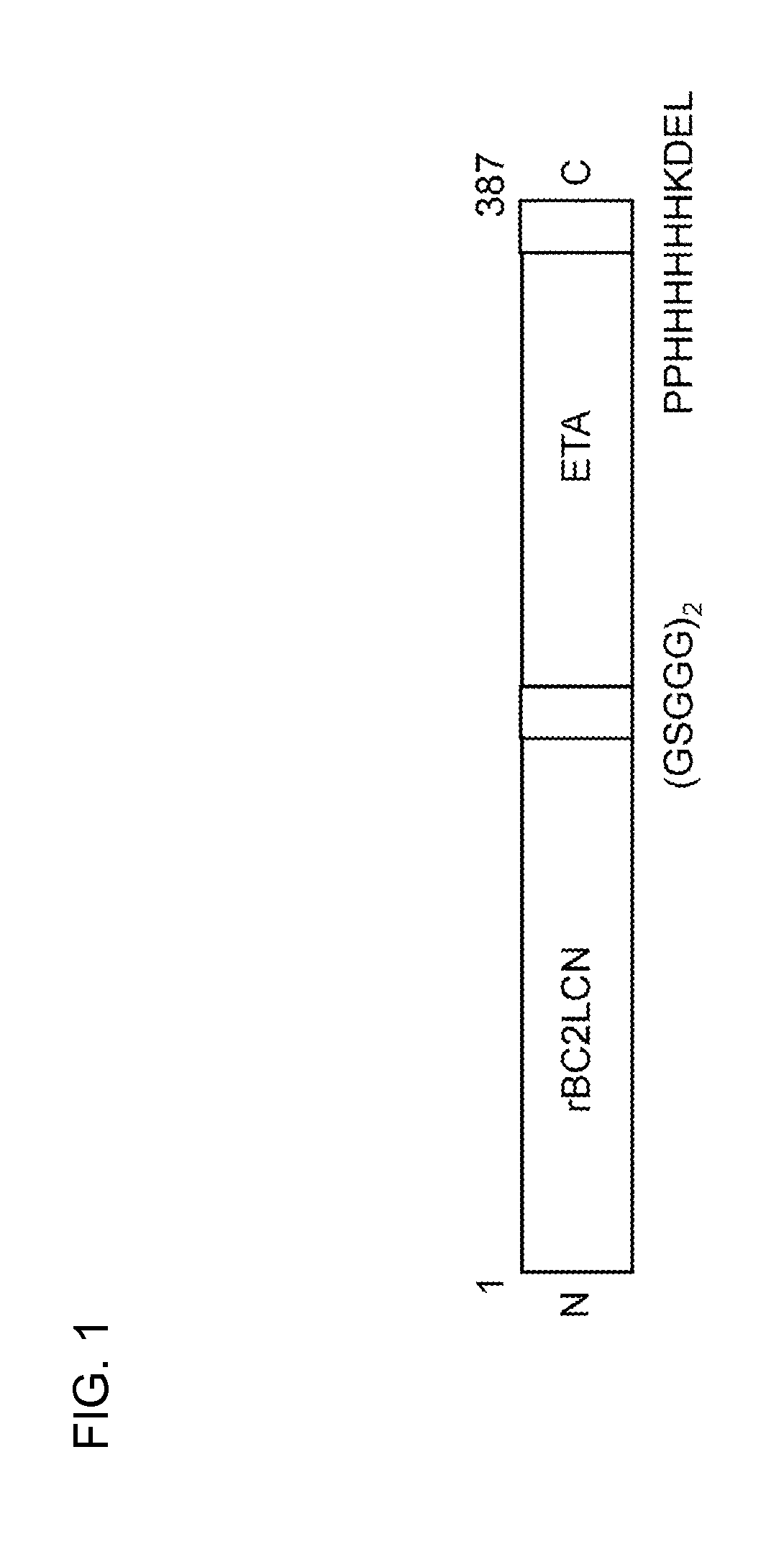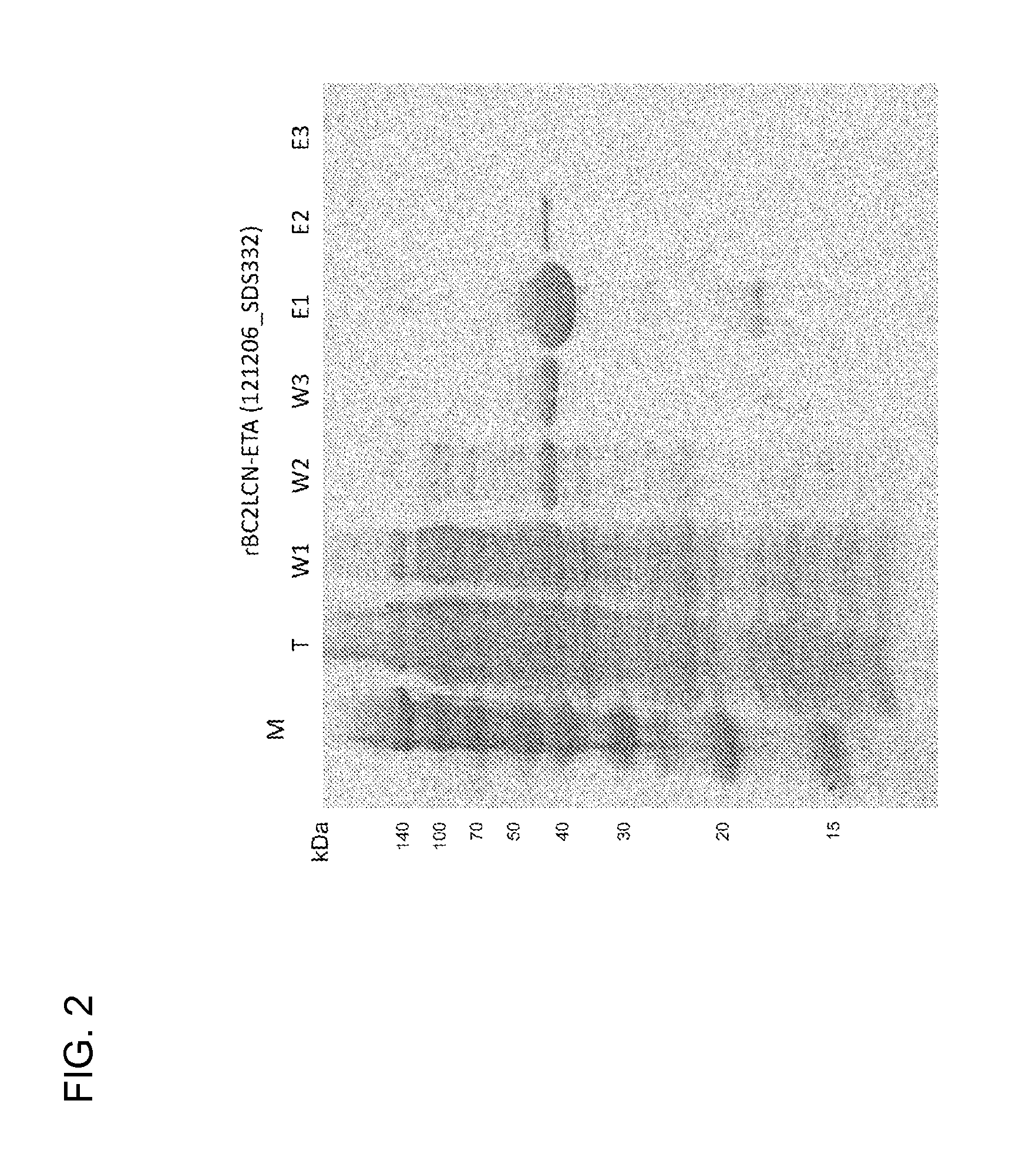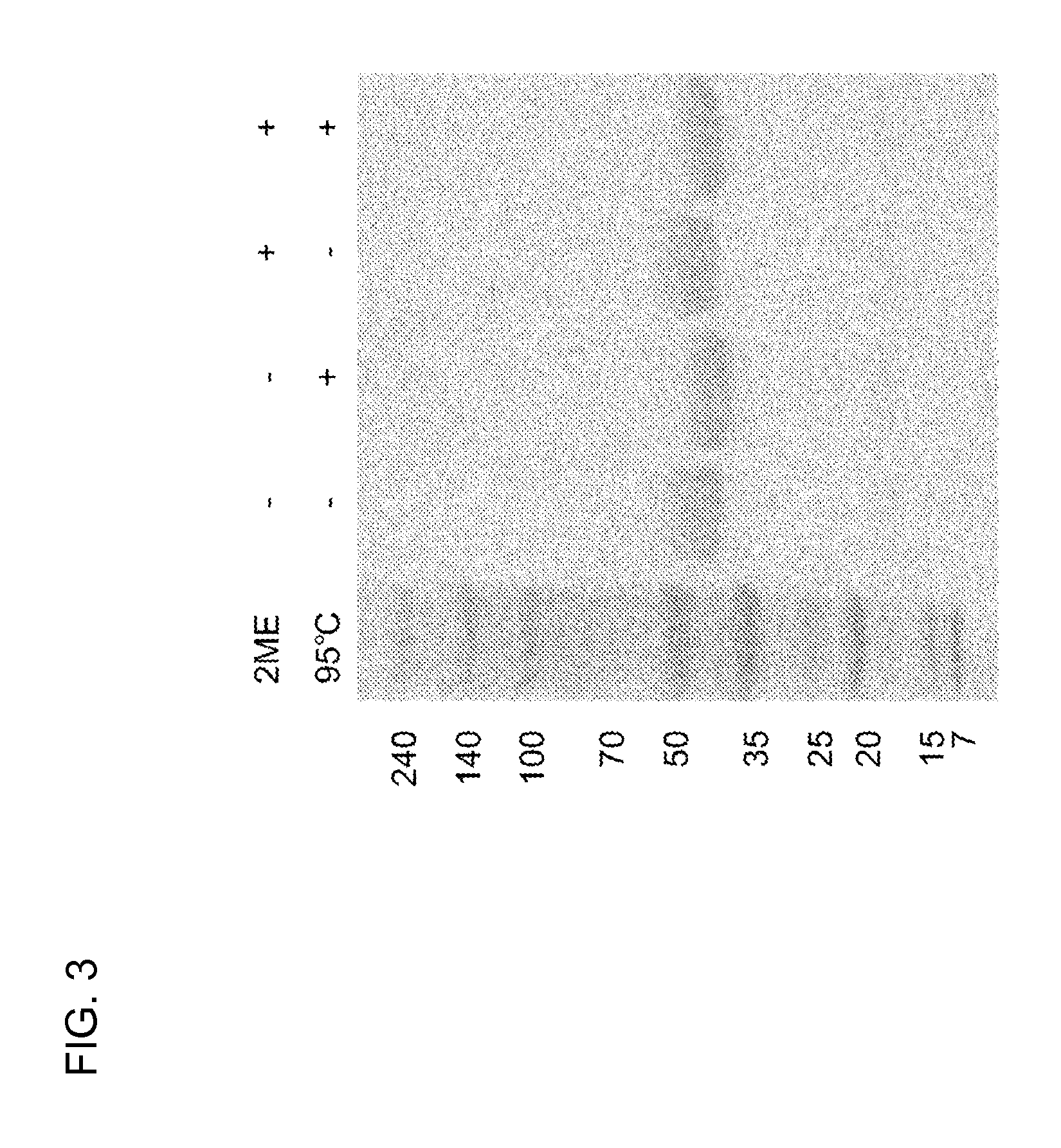Undifferentiated cell elimination method
- Summary
- Abstract
- Description
- Claims
- Application Information
AI Technical Summary
Benefits of technology
Problems solved by technology
Method used
Image
Examples
example 1
Expression of Recombinant rBC2LCN-ETA in Escherichia coli
[0119]The gene of the protein described in FIG. 1 was designed, incorporated into pET27b (Stratagene Co., Ltd.), and introduced into Escherichia coli strain BL21 Codon Plus (DE3)-RIL (Stratagene Co., Ltd., #230245). The transformant was suspended in 5 mL of LB culture medium containing 10 μg / mL kanamycin and cultured overnight. The precultured solution (5 mL) was added to 1 L of LB medium and cultured, and 2 to 3 hours later, 1 mL of 1 M IPTG (Fermentus Co., Ltd., #R-0392) was added to a final concentration of 1 mM when (OD600) reached around 0.4. After shake culture at 20° C. for 24 hours, bacterial cells were collected by centrifugation, suspended in a buffer, and subjected to ultrasonification, and the protein soluble fraction was extracted. The protein soluble fraction of Escherichia coli was subjected to affinity purification using a fucose sepharose column prepared by covalently binding commercial sepharose (from GE Heal...
example 2
Binding of rBC2LCN-ETA to Human iPS Cell
[0121]Human iPS cells (strain 201B7) used in this Example were obtained from Riken BioResource Center.
[0122]The binding affinities of rBC2LCN-ETA and wild-type rBC2LCN to “Fucα1-2Galβ1-3GlcNAc (H type 1)” and “Fucα1-2Galβ1-3GalNAc (H type 3)” as sugar chain ligands for rBC2LCN were examined by frontal affinity chromatography (Non Patent Literature 8). The results are shown below (Table 1). The dissociation constant (Kd value) of rBC2LCN-ETA as a fusion protein was 9.9 μM for H type 1 and 32.3 μM for H type 3, and was found to be comparable to the dissociation constant of wild-type rBC2LCN (8.3 μM for H type 1 and 25.4 μM for H type 3).
TABLE 1H type1-pNPH type3-pNPKd (μM)rBC2LCN9.932.3rBC2LCN-ETA8.325.4
[0123]Then, binding to human iPS cells (strain 201B7) was observed by fluorescence staining. Human iPS cells (strain 201B7) cultured in a 24-well plate were fixed with 4% paraformaldehyde at room temperature for 20 minutes, reacted with 10 μg / mL ...
example 3
Killing Effect of rBC2LCN-ETA on Human ES Cell
[0124]Human ES cells (strain H7 (strain WA07)) used in this Example were obtained from Wisconsin International Stem Cell (WISC) Bank. The culture method was according to the protocol of WiCell Research Institute.
[0125]Solutions of rBC2LCN-ETA obtained in Example 1 in a dilution series (5 and 50 μg / mL) were prepared and reacted with human ES cells (strain H7 (strain WA07)) during culture. 24 Hours after adding rBC2LCN-ETA, the life or death of the ES cells was determined using LIVE / DEAD Cell Imaging Kit (488 / 570) (Life Technologies Co., Ltd.) (FIG. 6). When rBC2LCN-ETA was added at concentrations of 5 and 50 μg / mL and phase contrast images were observed 24 hours later, degeneracies were seen in the colonies of the ES cells (FIGS. 6A, D, and G). Live cells decreased concentration-dependently (FIGS. 6C, F, and I. In the figure, the red fluorescence is a label specific for dead cells and the green fluorescence is a label specific for live ce...
PUM
| Property | Measurement | Unit |
|---|---|---|
| Molecular weight | aaaaa | aaaaa |
| Cytotoxicity | aaaaa | aaaaa |
Abstract
Description
Claims
Application Information
 Login to View More
Login to View More - R&D
- Intellectual Property
- Life Sciences
- Materials
- Tech Scout
- Unparalleled Data Quality
- Higher Quality Content
- 60% Fewer Hallucinations
Browse by: Latest US Patents, China's latest patents, Technical Efficacy Thesaurus, Application Domain, Technology Topic, Popular Technical Reports.
© 2025 PatSnap. All rights reserved.Legal|Privacy policy|Modern Slavery Act Transparency Statement|Sitemap|About US| Contact US: help@patsnap.com



